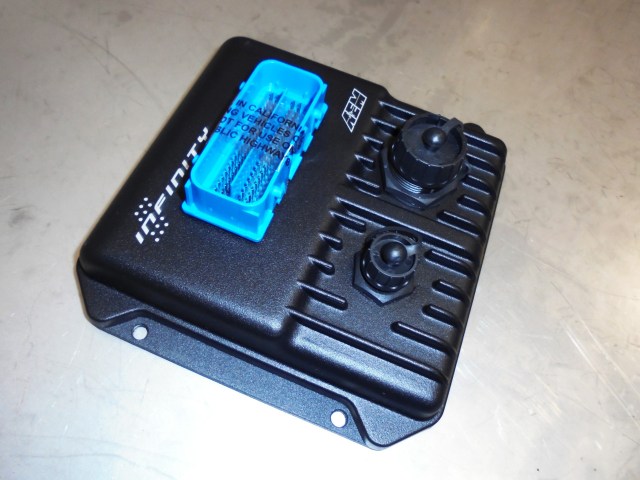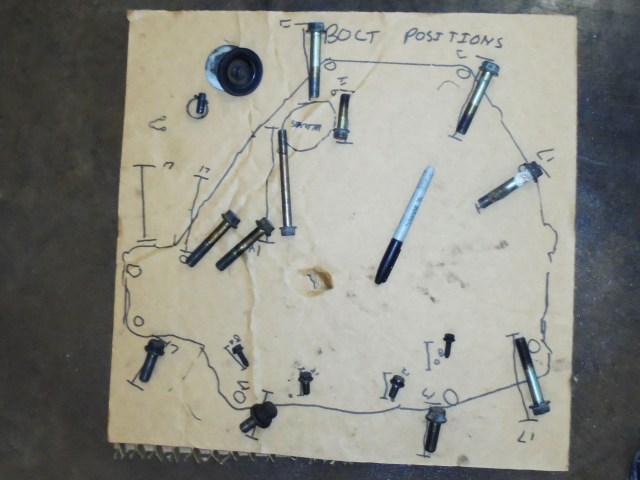
Every racecar driver wants more power. For our budget Honda Challenge build, we wanted more power, too. The problem was that pesky rulebook. More power usually means more modifications, and when it comes to engine internals, Honda Challenge 4 rules are specific: you can’t do it.
That left us with what we could do to the Honda B18A1 engine, which wasn’t much: blueprint, balance, and bore 0.40 inch over stock. We could port-match the intake and the head within 1 inch of the outlets and ensure we got the compression to the maximum of .5 above the OEM number. We left all of that hard work to Rich Olivier at TEM Machine Shop in Napa, Calif. We also had a few more options available to us within the Honda Challenge rules: a header, intake tubing in front of the throttle body, underdrive pulleys, ignition, increased fuel pressure and standalone engine management.

We started with AEM because it has proven to be a reliable aftermarket supporter of Honda Challenge for years. We installed its fuel pump, fuel filter and fuel pressure regulator. Most Honda Challenge racers I have talked to find performance gains by increasing fuel pressure. The AEM fuel pressure regulator allows us to adjust our fuel pressure to the optimum level, based on dyno-tuning the engine.
Because we have heard horror stories about stock Honda distributors, we upgraded to AEM’s coil-on-plug conversion kit. This system allows you to replace the distributor with an engine position module, which tells the four separate coils, placed directly on top of the spark plugs, when to fire (AEM part number PN30-2860). Another concern Honda racers had shared with us was that the stock ECU motherboards are aging and are starting to break down. Since the Honda Challenge rules allow for a standalone engine management system, we decided to keep it all in the family with AEM so everything would plug and play and work well together: ignition, fuel and engine management. We decided to use the extremely programmable and versatile AEM Infinity system.


As part of the blueprinting of our engine, we pulled the stock fuel suspens and shipped them to Injector Experts in Ohio. For $20 per injector they clean them and then test them at different fuel pressures. They provide a report and photos showing the spray pattern of each injector so you know the injectors are working as they should. If you have a bad one, they will help you replace it. With a four cylinder, it was a no-brainer for $80. If I raced a V-10 Viper, that could add up in cost. Then again, if I were racing a Viper I could probably afford it.

To connect all of the components together we replaced the aging stock wiring harness with a mil-spec engine harness from Chase Bays. Chase Bays asked us what systems we would be using, which systems we would be deleting (reverse light on transmission, any smog controls, etc.) and then built us a custom wiring harness that only used what we needed. Fewer wires equal fewer headaches and less weight. The harness was clean and plugged right into everything we had on the engine.

Because we really couldn’t make our engine quicker internally with modifications like bigger cams, we tried to ensure that all the power the engine would create could get to the wheels. We started that by lightening things attached to the engine that were legal, according to Honda Challenge rules. We worked from the crank outward. On the front of the engine, we replaced the heavy crank pulley/harmonic balancer with an aluminum underdrive pulley from Unorthodox Racing. We saved 6.5 pounds right there. On the other side of the crank, we added a lightweight flywheel, a lightweight clutch, and used ARP bolts to hold it all in place, saving another 13.7 pounds. That is a total of 20.2 pounds of rotational mass off of the crank. That is an amount you will definitely feel behind the wheel.



To hold the power plant firmly in place in the Integra chassis, we installed a set of Hasport mounts. The Hasport pieces came with all-new bolts, looked great, were lightweight, and fit perfectly. Racers can choose the hardness of the urethane inside the Hasport mount (Street, Race, Extreme Race and Most Extreme Race). We chose the “race” versions. Hasport said the stiffer versions were designed for drag racers.

Once we had some power built into the engine, it was time to concentrate on getting that power to the ground. We sent our Honda LS transmission to Synchrotech Transmissions in San Dimas, Calif., for a complete rebuild. The guys at Synchrotech were kind enough to let me hang out at the shop and watch the rebuild from beginning to end. We added an M Factory 1.5-way, plate-style, limited-slip differential and changed our final drive to 4.71:1 for better gearing out of the corners.




From the engine, through the transmission, to the sticky Toyo Proxes RR tires, there is a vital piece of equipment on front-wheel-drive Hondas and Acuras that makes it all work: the axles. I have smoked at least 10 axles over the years racing Integras. To avoid more failures, we got rid of the cheap Napa Auto Parts remanufactured axles and went with a performance part from Insane Shafts. Insane Shafts builds its axles for 500 horsepower drag racing Hondas and then adds a thicker boot around the CV joints for road racers. This axle was developed over the years through working with Marcel De Kerpel of DK Racing, who races H2 in NASA’s SoCal region. Marcel has been running the same untouched set of Insane Shafts in his Honda Civic for threef seasons.

Once the engine and transmission were installed in the Integra’s engine bay, we used an AEM intake pipe to grab cold air and streamline it to the throttle body. The next thing to do is taking the car to AJ Gracy at Performance In-Frame Tuning and get it on his chassis dyno so he can fine-tune the AEM Infinity computer. Only then will we really know the horsepower number and see if our Honda Challenge racecar has a shot at a National Championship in October.




Next month we will feature the finalizing of our budget Honda Challenge racecar build with some aerodynamic modifications, interior upgrades, paint, stickers, a track day shakedown and maybe even some dyno numbers.
To read more from Rob Krider or to contact him go to www.robkrider.com.





















